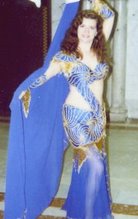 | I am: Samuel R. "Chip" DelanyFew have had such broad commercial success with aggressively experimental prose techniques. |
Sunday, January 28, 2007
And I Was Going For LeGuin!
Wednesday, January 17, 2007
The Active Germ-Line Replicator
What is a "gene"? Dawkins admits to using the term loosely. In this chapter he tries to nail down the term more precisely, in order to give a clearer, "gene's eye-view" of the replicator as the unit of selection.
In 1957 S. Benzer split the gene into three units: the muton (minimum unit of mutational change); the recon (minimum unit of recombination); and the cistron (roughly equivalent to the unit need for one polypeptide synthesization). Dawkins proposes the optimon (and Ernst Mayr the selectron) as the unit of natural selection.
Dawkins briefly describes Gould's objection to his proposal, and critiques Gould't characterization of the selfish gene replicator as located "below" the level of the individual (which for Gould was the unit of selection), as the species group-unit is located "above" the level of the individual. Dawkins points out that this "single-dimensional ladder" analogy is not apt in that genes are replicators, whereas vehicles (individuals and species) are not. Individual vehicles are selected, but they are not replicators (more on this later). Likewise, replicators are selected by proxy as individuals (vehicles) are selected.
The issue of species versus individual selection is a question of what is to be properly considered a vehicle; the issue of individual/species versus gene selection is a question of what is to be considered a replicator.
"I define a replicator as anything in the universe of which copies are made," says Dawkins. These may be active (displaying some ability to influence their being copied) or passive, "germ-line" (such as gametes), or "dead-end" (somatic). It is the active, germ-line replicator that Dawkins names as his optimon.
Because chromosomes, and the genes within them, are subject to splitting due to crossing-over in sexual reproduction, replicators may consist of various codon lengths, but, depending upon their length and the strength of the particular selective pressure on them, various replicators will have different "half-lives," and the most successful replicators will, by exerting their phenotypic effects, have the longest half-lives with respect to their alleles.
It now becomes obvious why no individual, nor even an individual's genome, can be considered a replicator.
In the next chapter, Dawkins explains what individuals and species are, and why species also cannot be defined as replicators.
In 1957 S. Benzer split the gene into three units: the muton (minimum unit of mutational change); the recon (minimum unit of recombination); and the cistron (roughly equivalent to the unit need for one polypeptide synthesization). Dawkins proposes the optimon (and Ernst Mayr the selectron) as the unit of natural selection.
Dawkins briefly describes Gould's objection to his proposal, and critiques Gould't characterization of the selfish gene replicator as located "below" the level of the individual (which for Gould was the unit of selection), as the species group-unit is located "above" the level of the individual. Dawkins points out that this "single-dimensional ladder" analogy is not apt in that genes are replicators, whereas vehicles (individuals and species) are not. Individual vehicles are selected, but they are not replicators (more on this later). Likewise, replicators are selected by proxy as individuals (vehicles) are selected.
The issue of species versus individual selection is a question of what is to be properly considered a vehicle; the issue of individual/species versus gene selection is a question of what is to be considered a replicator.
"I define a replicator as anything in the universe of which copies are made," says Dawkins. These may be active (displaying some ability to influence their being copied) or passive, "germ-line" (such as gametes), or "dead-end" (somatic). It is the active, germ-line replicator that Dawkins names as his optimon.
Because chromosomes, and the genes within them, are subject to splitting due to crossing-over in sexual reproduction, replicators may consist of various codon lengths, but, depending upon their length and the strength of the particular selective pressure on them, various replicators will have different "half-lives," and the most successful replicators will, by exerting their phenotypic effects, have the longest half-lives with respect to their alleles.
It now becomes obvious why no individual, nor even an individual's genome, can be considered a replicator.
In the next chapter, Dawkins explains what individuals and species are, and why species also cannot be defined as replicators.
Subscribe to:
Comments (Atom)



